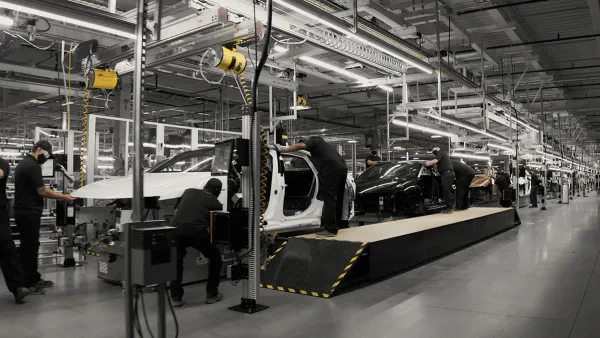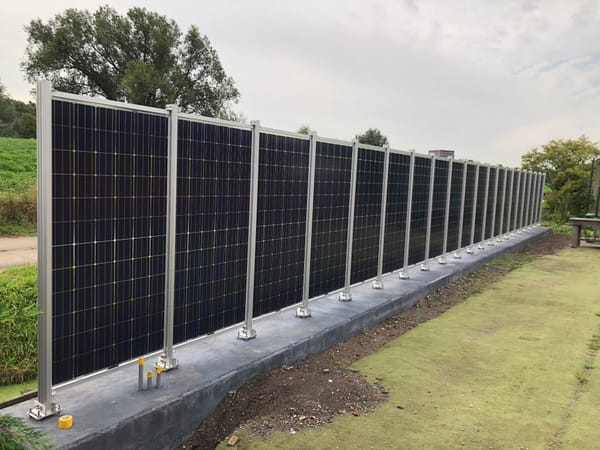Seven systemic changes we need to make to fix climate change
Good Afternoon!
The core problem – and perhaps an opportunity – with addressing climate change is that it requires the world to shift its economy from fossil-driven to green technology. Obviously, that kind of change means a lot of people who made their money in fossil fuels would be left behind, while empowering a new set of people to make money with green technologies.
This also includes a massive paradigm shift since fossil fuels are scarce by nature: They are in limited locations and you have to have the means to pull them out of the ground. In contrast, green energy is highly distributed. Once you have a solar cell you can point it at the sun and get energy. Similar results with wind and wind turbines, warm earth and geothermal. Green technology is relatively cheap, compared to the cost of fossil fuel extraction, refining, and delivery.
It may not seem that way, since we’ve spent 150 years building infrastructure to move fossil fuel energy. But when you take into account the core cost of oil derricks, refineries, pipelines, and trucks for gas and oil, and mines, railroads, and power plants for coal, manufacturing and erecting solar panels actually comes out pretty cheap.
But that tremendous infrastructure and investment in fossil fuel systems is hard to just junk, particularly since quite a few people have careers and wealth locked up in those systems. Now that we know how to have a green economy, it’s systemic changes that stand in the way of progress. The systems are not about ability, but about how people make their money and livelihoods, which means the real barriers to addressing climate change are not technological, but societal. Here’s seven systemic barriers we’ll need to address – in the U.S. and the rest of the world – if we’re going to halt climate change.
-Mike

Seven system changes we need to make to fix climate change
- Make bleeding edge tech like carbon capture, hydrogen, and battery production profitable at a lower cost.
Scientists and engineers tell us that we know how to do these things, but none of them are really profitable. For instance, there’s no intrinsic market need for carbon capture, so governments will have to incentivize it through tax credits, requirements, and direct purchases. So far the Biden Administration has created tax credits for carbon capture though the Inflation Reduction Act, is requiring power plants to use carbon capture through new EPA pollution rules, and seems about to start paying yet-to-be-built carbon capture facilities to do their thing.
The U.S. is already preparing to spend hundreds of billions of dollars on this stuff. It will need to spend much more, and all the other rich countries of the world will need to do the same.
- Remove local permitting barriers for infrastructure
Federal regulators made a big to-do last month about taking steps to ease infrastructure permitting. But the ultimate problem with permitting is not federal, it’s local. For instance, in Illinois a revolutionary system to capture carbon-dioxide, then move it through existing methane gas pipelines to locations where it is injected into old gas wells has been halted by a local county board that has banned CO2 pipelines for 2023. Powerlines, solar farms, wind farms, and geothermal projects are facing similar blockades across the country. Permitting used to be the main tool for environmentalists to slow fossil fuel projects, now it’s green energy’s biggest bugbear. The only real solution is federal legislation that exempts certain projects from local permitting, and that is a real political powderkeg.
- Scale up train travel
While huge swaths of the country aren’t well suited for trains, most cities east of the Mississippi are close enough that a moderately fast train ride (at around 100 miles an hour) can make train travel more efficient and quicker than air travel. Plus, other places like the Texas Triangle and the West Coast are also good train candidates. If passenger rail travel in the U.S. was funded at half the cost of highway subsidies, we could have cheap, convenient trains between downtowns that create a fraction of the carbon planes and cars create.
- Encourage consumers to move from ICE to EV
The average age of a car on the road today is twelve years. I’ve had my car for ten years, and hope to make it last much more than that. I suspect most Americans are like me, so if we’re going to actually get internal combustion engine (ICE) cars off the road, subsidies are going to have to get bigger than the $7,500 tax rebate currently offered, and maybe governments will have to start penalizing ICE car owners for the right to spew carbon.
- Find minerals and scale up production
Lithium, cobalt, nickel, and graphite are now in short supply as we begin to manufacture EV batteries and engines by the millions. While we haven’t likely found all the deposits, the countries with reserves of these minerals, like Peru, Congo, and Indonesia, are gaining new stature as China, Europe, and the United States scramble to make deals for extraction and refining. The U.S. has some of these minerals, but we’ve been unwilling to pay the economic and environmental price to get them. We’re going to have to change that and put the same kind of effort into getting these minerals that we expend on getting oil and gas.
- Remove barriers to building wind, solar, geothermal
While permits are one kind of barrier, plenty of state laws set up to favor utilities have arrested the development of renewable power. For instance, In my home state of Illinois, community solar projects, where any consumer can purchase power from a solar farm, are limited to adding just 200 megawatts a year. Utilities have sought these kinds of restrictions because renewables are often cheaper than the old fossil fuel plants they operate, and the utilities want to keep making money, regardless of the carbon cost.
- Reduce our love of beef and pork
I’m a foodie and I love meat. Most years I host a pig roast for me and a few dozen close friends. But we all need to figure out a way to eat less meat. For instance, as compensation, I’m trying to cook seafood at least once a week, and a plant-based meal once a week. Domestic animal farts – yep methane – is one of the world’s biggest sources of greenhouse gasses. If we eat less meat, there will be fewer animal farts.
Other Things Happened
- The Biden Administration seems to have convinced farmers there’s a climate problem.
- The eight countries that the Amazon runs through signed a pact to curb deforestation.
- The number of undergraduate petroleum engineering students has dropped 75% in the last six years. Oil companies can’t find enough people to fill positions.
You made it to the bottom! Climate change is a death by 1,000 cuts.





